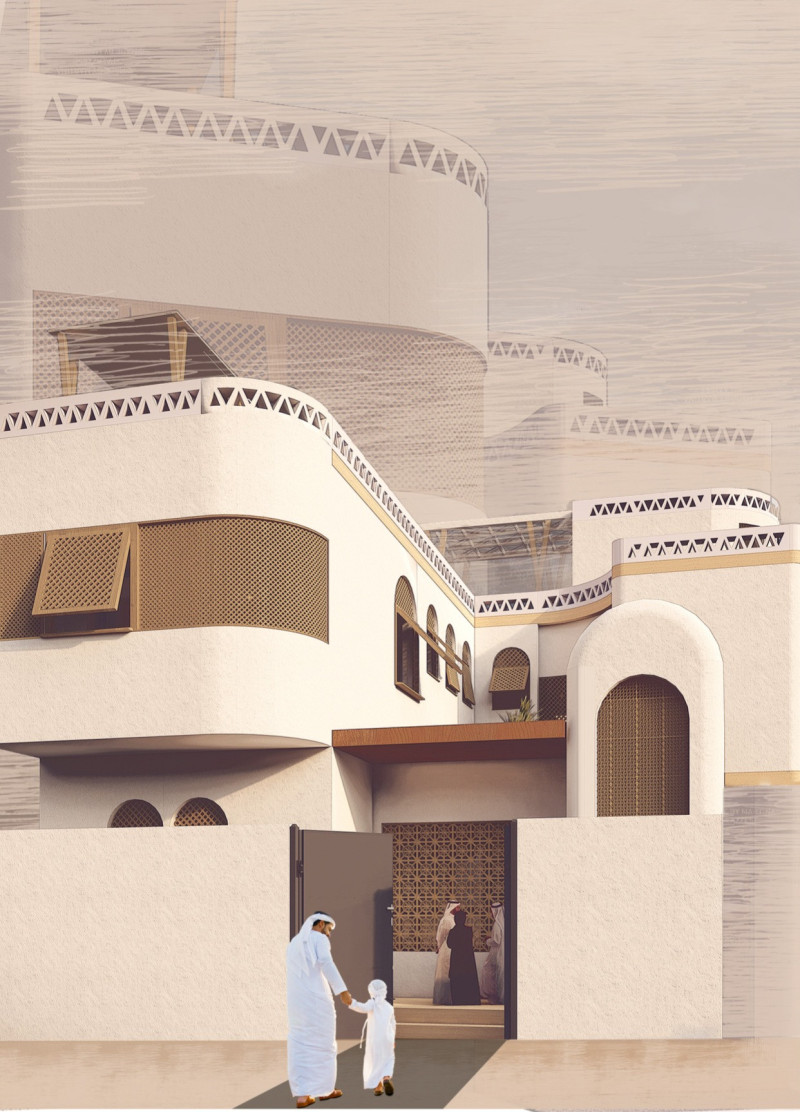5 key facts about this project
At its core, the project is a space for [function of the project, e.g., public gatherings, educational activities, etc.], designed to facilitate a variety of activities that engage with the community. The layout is intuitively organized, featuring open communal areas that encourage interaction while providing private spaces for reflection or smaller group engagements. Careful consideration has been given to the accessibility and flow of movement throughout the building, ensuring that users can navigate seamlessly between diverse spaces.
One of the significant features of the design is its materiality. The project utilizes a combination of local materials that not only enhance the visual appeal but also reinforce the connection to the regional context. Sustainable materials such as reclaimed wood and energy-efficient glass are employed strategically, balancing aesthetic qualities with ecological responsibility. This thoughtful choice of materials is representative of a broader commitment to sustainability, highlighting how architecture can contribute positively to the environment.
The roof design is noteworthy for its functional and aesthetic qualities. By implementing green roofs, the design not only manages stormwater effectively but also increases biodiversity and provides insulation benefits. This unique design approach considers ecological impacts while creating a visually engaging silhouette against the skyline. Moreover, large windows and strategically placed skylights allow for abundant natural light, minimizing the reliance on artificial lighting and enhancing the building's overall energy efficiency.
Landscaping also plays a vital role in the success of the project, extending the architectural form into the surrounding environment. Native plant species are incorporated into the landscape design to promote local flora and fauna, creating a harmonious relationship between the building and its context. Outdoor spaces are intentionally designed to invite users to linger, with seating areas that encourage casual gatherings or quiet moments of contemplation.
The architectural design embraces an open conceptual layout that reflects modern principles of transparency and fluidity. By using glass partitions where possible, the design fosters a sense of connection between interior and exterior, allowing the landscape to become an integral part of the users’ experience. This blurring of boundaries enhances the feeling of spaciousness and encourages an appreciation for the natural surroundings.
While the project stands firmly within contemporary architectural traditions, it also references local vernacular elements. This integration creates a dialogue between the modern design and the cultural context, grounding the project in its location. Elements such as [specific architectural details, e.g., overhanging eaves, locally inspired patterns, etc.] are thoughtfully woven into the façade, enriching the visual narrative and underscoring the importance of context in architectural design.
The balance of innovative design with functional needs defines this project as a commendable example of how modern architecture can enhance the quality of life in community settings. The decisions made throughout the design process are not merely aesthetic but thoughtful responses to the demands of modern living. This architecture serves as a reminder that buildings can be more than structures; they can be vibrant spaces that inspire connection and creativity among users.
To fully appreciate the nuances of this architectural project, interested readers are encouraged to explore the architectural plans, sections, and designs available in the project presentation. These elements offer deeper insights into the design ideas, revealing the careful considerations that shape the overall experience of the building. The project stands as an invitation to rethink the role of architecture in community life, encouraging ongoing dialogue about its potential and purpose.


 Yasmeen Elabbasy,
Yasmeen Elabbasy,  Moamen Hamza Abdelmoamen Farag Elakrat,
Moamen Hamza Abdelmoamen Farag Elakrat, 























